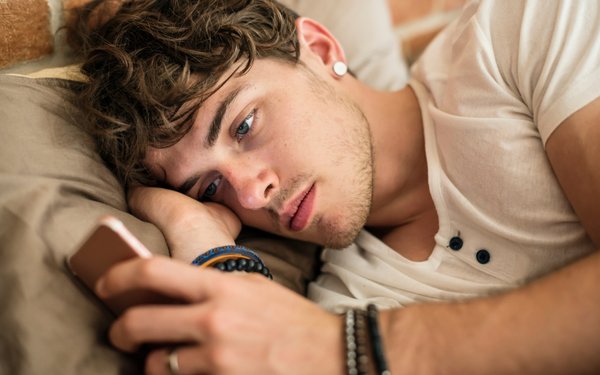Adobe: Consumers Feel Many Emotions While Interacting With Content 11 Hours A Day
- by Laurie Sullivan @lauriesullivan, February 8, 2018

A search, a click. Still, it has become increasingly difficult for advertisers to catch the attention of U.S. consumers who expect a lot from digital content and go through a multitude of emotions as they click their way through the process.
Productive, entertained, connected, and relaxed are the most common positive emotions felt when using more than one device at once, according to the findings. The most dominant negative emotion is distracted, at 17%. Some 6% say they feel bored, 4% feel unproductive, 3% feel frantic, and 1T% feel ashamed.
"Some segments seem to be more counterproductive," said Haresh Kumar, director of strategy and product marketing at Adobe.
Analyzing the trend, Adobe surveyed more than 1,000 consumers between December 11 and December 17, 2017, and found that the number of digital consumption hours continue to grow.
Many of the participants in a survey on consumer engagement released Thursday admit to spending an average of 7.8 hours daily -- nearly half a day -- with content.
The number of hours increases for younger generations such as Millennials, who consume content on average 9.6 hours per day, and teens who spend about 11.1 hours per day. Even baby boomers spend time engaging with content, at about 6.1 hours per day. And those age 71 and older spend about 4.4 hours per day.
Some 55% spend time not just on one device but on many devices simultaneously. Most consumers typically use around two devices at a time, though younger generations tend to be slightly more comfortable using more than two.
Smartphones are the most commonly used device to engage with content. Males, 67%, prefer to use a laptop or desktop computer to look at or engage with content, while females, at 86%, refer smartphones. Millennials and Gen Xers are also more likely to prefer to mostly use a smartphone, 92% for both.
When asked about engaging with content on newer devices, consumers said they expect to engage the most with home entertainment streaming devices and smart speakers such as home assistants, Kumar said.
Females, at 46%, are more likely to expect to use wearable devices, while males are more likely to expect to use connected car dashboards at 32%.
Millennials, at 70%, are more likely to expect to use smart speakers and home assistants, and 47% said they will use wearable devices. Baby boomers are more likely to expect to use digital displays, at 45%.
Taking too long to load is the biggest problem people encounter when viewing content -- but excessively long content, difficulty interacting with content, and content not loading are all leading issues that cause nearly half of consumers to stop what they are doing and move on.
Baby boomers are more likely than younger generations to stop what they’re doing when they experience these.
As for the purchase process, specifically, consumers said they engage on multiple channels throughout. For example, 48% of consumers will visit a brand’s website to research a product. Interestingly, 37% of teens and 27% of Millennials use video channels.
When purchasing, 59% of consumers go to online marketplaces, while 49% visit a store. Following the purchase, 51% go back to the brand’s website. Some 58% of consumers use a smartphone or connected device in a store to search for inform about their pending purchase.


